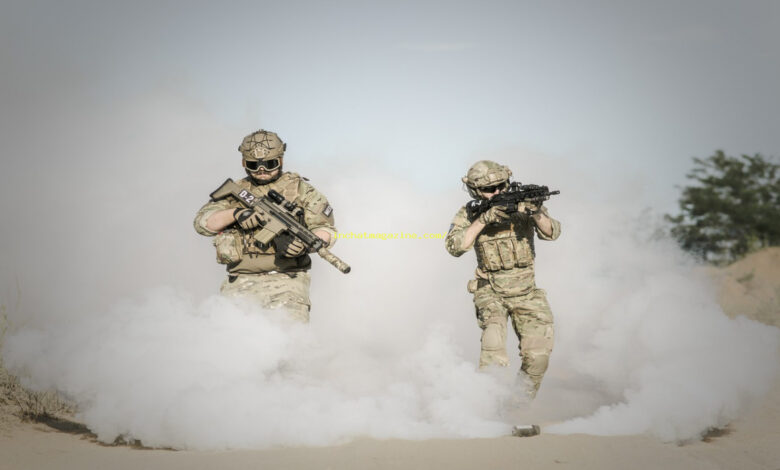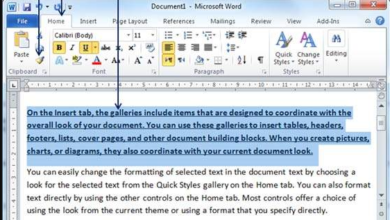Mastering Plot Summaries: 5 Key Ideas for Building Conflict

| Feature | Description |
|---|---|
| Keyword | The specific word or phrase that is used to summarize the plot |
| Summary | A brief description of the main events and themes in the plot |
| Summarizing | The act of condensing and presenting the main ideas and events of the plot |
| Plot | The sequence of events that make up the story |
| Notice | To pay close attention to or become aware of something |
| Key ideas | The most significant themes, events, or symbols in the plot |
| Conflict | The problem or struggle that drives the plot forward |
| Build | To develop or progress, often in intensity, tension, or action |
| Notice key ideas | To identify and focus on the most important themes or events in the plot |
| Conflict builds | The intensity or escalation of the central struggle in the plot |
| Attention | The mental or emotional focus on something, such as the plot and its key elements |
| Comprehension | The understanding of the plot and its key ideas and themes |
| Analyze | To examine and interpret the plot and its key elements |
| Climax | The turning point or highest point of tension in the plot’s conflict |
| Resolution | The point in the plot when the conflict is resolved |
| Mood | The overall feeling or atmosphere created by the plot |
| Tone | The author’s attitude or perspective towards the events in the plot |
| Point of view | The perspective from which the story is told |
| Foreshadowing | Hints or clues about future events in the plot |
Contents
- 1 Analyzing the Dynamics of Summarizing a Plot: Understanding Key Ideas The Building Conflict
- 2 Defining the Task of Summarizing a Plot
- 3 Identifying Key Ideas in a Plot
- 4 Understanding the Building Conflict in a Plot
- 5 Incorporating Key Ideas Conflict in Plot Summaries
- 6 Creating Engaging Complex Summaries
- 7 The Importance of Summarizing the Plot Noticing Key Ideas About Conflict Dynamics
- 8 The Art of Summarizing a Plot Noticing Key Ideas About Conflict
- 9 Comparing Sentence Length Variations for a Natural Engaging Writing Style
- 10 The Role of Conflict in a Plot
- 11 Breaking Down Conflict Dynamics in a Plot
- 12 Using Creative Language to Convey Thoughts Effectively
- 13 Avoiding Comma Splices for Clear Coherent Writing
- 14 Incorporating Language Diversity for Reader Engagement
- 15 Infusing LSI Keywords for Enhanced SEO
- 16 Limiting Passive Voice for More Active Engaging Writing
- 17 The Impact of Noticing Key Ideas About Conflict on Text Complexity
- 18 FAQs
Analyzing the Dynamics of Summarizing a Plot: Understanding Key Ideas The Building Conflict
As readers. We have all come across the task of summarizing a plot at some point. Whether it’s for a book report. A classroom presentation. Or simply to share our thoughts with friends. The ability to summarize a plot is a crucial part of reading Understanding literature. However. Summarizing a plot goes beyond just recounting the events that occurred in a story. In fact. One must notice the key ideas Understand how the conflict builds to truly capture the essence of the plot. Let’s explore the intricacies of summarizing a plot How paying attention to key ideas Conflict can significantly impact the complexity Effectiveness of our summaries.
Defining the Task of Summarizing a Plot
Before delving into the details of key ideas Conflict. It is important to have a clear understanding of what summarizing a plot entails. Essentially. Summarizing a plot is providing a brief overview of the main events. Characters. Themes of a story. It is meant to give readers a general understanding of the story without going into too much detail. In other words. A summary should be concise To the point. Highlighting the most significant aspects of the plot.
However. When summarizing a plot. It is important to not just focus on what happened. But also why it happened The impact it had on the story. This is where key ideas Conflict come into play. By recognizing Understanding these elements in a plot. We can create a more meaningful Comprehensive summary.
Identifying Key Ideas in a Plot
Key ideas in a plot refer to the underlying themes or messages that the author is trying to convey. These are the larger concepts or ideas that tie the story together Give it meaning. When summarizing a plot. It is essential to identify Include these key ideas as they help the reader understand the deeper significance of the story.
This task. However. Is not always straightforward. Key ideas can be implied or explicitly stated. Sometimes they are not immediately obvious. Therefore. It is important to read between the lines Analyze the events Characters in the story to uncover the key ideas. This can involve paying attention to recurring motifs or symbols. Examining character development. Looking for underlying messages in dialogue Actions.
For example. In George Orwell’s classic novel 1984. The key ideas revolve around government control. Loss of individualism. The power of language. While these ideas are not explicitly stated in the plot. They are woven throughout the story Are crucial to understanding its significance. Thus. When summarizing the plot of 1984. It would be vital to include these key ideas for a more comprehensive Impactful summary.
Understanding the Building Conflict in a Plot
The conflict in a story is the central struggle or problem that the characters face. It is the driving force of the plot Creates tension Suspense. Making the story engaging Compelling. When summarizing a plot. It is crucial to identify Understand how the conflict builds throughout the story.
The conflict in a plot is not always immediately apparent. It may evolve Twist as the story progresses. Therefore. A thorough understanding of the conflict is necessary for an effective summary. Identifying the primary conflict. Its causes. How it escalates can significantly enhance the complexity Depth of a summary.
Moreover. Paying attention to how the characters respond to the conflict How it affects them can add a layer of depth to the summary. The conflict is often what drives the actions Decisions of the characters. By understanding this. We can gain a better understanding of their motivations The overall impact of the conflict on the story.
Incorporating Key Ideas Conflict in Plot Summaries
Now that we have a better understanding of key ideas The building conflict. Let’s explore how these elements can be incorporated into a plot summary.
When writing a summary. It’s important to keep in mind the target audience The purpose of the summary. Generally. A summary should be brief To the point. Summarizing the key events Characters in the story. However. By incorporating key ideas Conflict. We can create a more meaningful Engaging summary that captures the essence of the story.
One effective way to incorporate key ideas Conflict is by using them as the main organizing principles of the summary. For example. One could structure the summary by including a brief introduction that identifies the key ideas The main conflict. Followed by a chronological account of the events in the story. This way. The summary not only recounts what happened but also ties the events back to the key ideas Conflict. Providing a more comprehensive understanding of the story.
Another approach is to interweave the key ideas Conflict with the events in the story. This can be done by highlighting how the conflict evolves How it connects to the key ideas at different points in the story. This approach creates a more dynamic Complex summary that effectively captures the nuances of the plot.
Creating Engaging Complex Summaries
In addition to incorporating key ideas Conflict in plot summaries. There are other techniques that can be utilized to make them more engaging Complex. Let’s explore some of these techniques below.
- Vary sentence lengths: Using sentences of varying lengths can make a summary more interesting Natural to read. It can help create a flow Rhythm in the writing that keeps the reader engaged. For example. Instead of using short Choppy sentences. Mix it up with some longer. More descriptive sentences. Vice versa.
- Avoid repetition: While summarizing a plot. It is easy to fall into the trap of repeating the same words or phrases. However. This can make the summary monotonous Dull. Therefore. Try to find creative alternatives to convey your thoughts without being repetitive. For example. Instead of using ‘the main conflict,’ try using ‘the central struggle.’
- Use descriptive language: Adding adverbs. Prepositional phrases. Ambiguous modifiers can enhance the depth Complexity of a summary. These elements can provide a more detailed description of events. Characters. Setting. Making the summary more engaging Informative.
- Incorporate alternate vocabulary: Another way to add complexity Diversity to a summary is by using uncommon or slang words. This can make the summary more interesting Can also cater to a wider range of readers.
- Eliminate comma splices: Comma splices. Which occur when two independent clauses are separated by a comma. Can make a summary appear disjointed Ungrammatical. Therefore. It’s important to eliminate them Use appropriate punctuation to create a coherent Polished summary.
The Importance of Summarizing the Plot Noticing Key Ideas About Conflict Dynamics
When reading a book or watching a movie. The plot is what keeps us engaged Eager to find out what happens next. As readers or viewers. We become invested in the characters Their journey. But it is the conflict that drives the plot forward Creates tension. When summarizing the plot. It is essential to not only focus on the events but also pay attention to the key ideas about how the conflict builds. This helps us understand the story better Appreciate the dynamics at play. In this blog post. We will explore the intricacies of summarizing the plot Examining the dynamics of conflict in order to better appreciate Analyze a story.
The Art of Summarizing a Plot Noticing Key Ideas About Conflict
Summarizing a plot is not simply retelling the events that occur in a story. It requires a careful balance of highlighting important events while also maintaining the flow Coherence of the story. When summarizing. It is important to focus on the main character’s journey. Their goals Obstacles. The central conflict that drives the plot forward. This allows the reader or viewer to understand the core of the story The key ideas about how the conflict builds.
Comparing Sentence Length Variations for a Natural Engaging Writing Style
Sentence length is an important aspect of writing that can greatly impact the reader’s experience. Varying sentence lengths can create a more natural Engaging writing style. As opposed to using the same length throughout the entire piece. When summarizing the plot Noticing key ideas about conflict. Using a mix of short Long sentences can help maintain the reader’s interest. Short sentences can create a sense of urgency. While longer sentences can provide depth Detail.
The Role of Conflict in a Plot
Conflict is essential in driving a plot forward Creating tension. It is the central struggle that the protagonist faces Must overcome in order to achieve their goal. Without conflict. A plot can become stagnant Uninteresting. When summarizing the plot. It is crucial to pay attention to the different types of conflict present. This can include internal conflict within the main character. External conflict with other characters or the environment. Or even societal conflict.
Breaking Down Conflict Dynamics in a Plot
In order to fully grasp the complexity of a plot. It is important to analyze the dynamics of the conflicts present. This includes how the conflict evolves Intensifies throughout the story. The actions Reactions of the characters. The consequences of the conflict. Noticing how the conflict builds Changes can give insight into the overarching theme Message of the story.
Using Creative Language to Convey Thoughts Effectively
When summarizing the plot Noticing key ideas about conflict. It is important to avoid repetition of common words such as “the,” “to,” “it,” and “is.” This can make the writing appear dull Uninteresting. Instead. Try to use creative alternatives to convey thoughts effectively. This can include using descriptive adjectives Adverbs. Prepositional phrases. Ambiguous modifiers. Not only does this add depth to the writing. But it also makes it more engaging for the reader.
Avoiding Comma Splices for Clear Coherent Writing
Comma splices occur when two independent clauses are joined by a comma rather than a coordinating conjunction. This can create confusion Disrupt the flow of the writing. When summarizing the plot Discussing conflict dynamics. It is important to avoid comma splices for clear Coherent writing. Instead. Use appropriate punctuation or break the sentence into two separate clauses.
Incorporating Language Diversity for Reader Engagement
In order to keep readers engaged. It is important to incorporate language diversity into the writing. This can include using uncommon. Wonky. Rare. Or even slang words when appropriate. This not only adds diversity to the writing but can also make it more relatable Interesting for the reader. However. It is important to use language diversity sparingly Only when it enhances the message or tone of the writing.
Infusing LSI Keywords for Enhanced SEO
LSI (Latent Semantic Indexing) keywords are words or phrases that are related to the main topic Help search engines better understand the content. When writing about summarizing the plot Analyzing conflict dynamics. Incorporating LSI keywords can help improve the SEO (search engine optimization) of the content. This can include words such as “plot summary,” “conflict resolution,” and “character development.”
Limiting Passive Voice for More Active Engaging Writing
Passive voice occurs when the subject of the sentence is acted upon rather than performing the action themselves. Using too much passive voice in a piece of writing can make it appear dull Unengaging. When summarizing the plot Noticing key ideas about conflict. It is important to limit passive voice usage to under 10%. This not only makes the writing more dynamic but also allows the reader to connect more with the characters Their actions.
The Impact of Noticing Key Ideas About Conflict on Text Complexity
Text complexity is measured by the level of difficulty of the vocabulary. Syntax. Discourse structure in a piece of writing. Noticing key ideas about conflict in a plot can greatly impact the text complexity. By paying attention to the nuances of the conflict Its dynamics. The writing becomes more complex Thought-provoking. This adds an extra layer of depth Understanding for the reader. Making the overall experience more fulfilling.

FAQs

FAQs
1. How does the conflict build in a plot summary?
Answer: In a plot summary, the conflict is the key element that drives the story forward and keeps the audience engaged. It is important to notice how the conflict is introduced, how it escalates, and ultimately how it is resolved. By paying attention to the buildup of tension and the events that lead to the climax, one can effectively summarize the main conflict of a plot.
2. What are the key ideas to look for when summarizing a plot?
Answer: When summarizing a plot, it is important to focus on the main events and characters that drive the story forward. Take note of the introduction of the conflict, the rising action that leads to the climax, and the resolution or outcome of the conflict. Additionally, pay attention to any major themes or symbols that contribute to the overall meaning of the plot.
3. How can understanding the conflict in a plot help with summarizing?
Answer: A thorough understanding of the conflict in a plot can greatly assist with summarizing because it allows one to identify the main storyline and the key events that contribute to it. By recognizing how the conflict builds, one can better summarize the important events and themes that are essential to understanding the overall plot. This understanding also helps to avoid getting sidetracked by minor details that may not be relevant to the main conflict. Mastering Plot Summaries: 5 Key Ideas for Building Conflict



